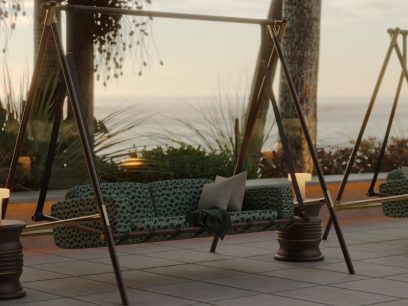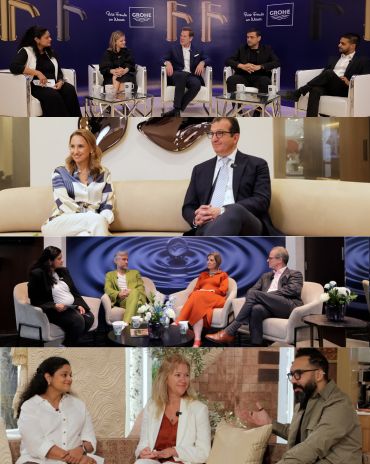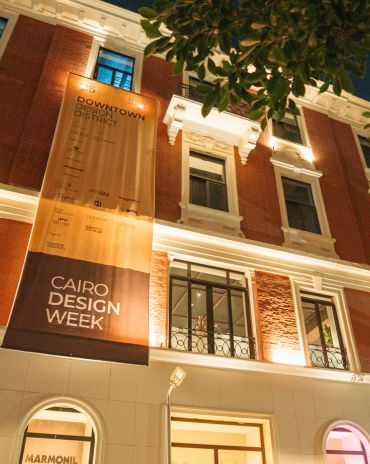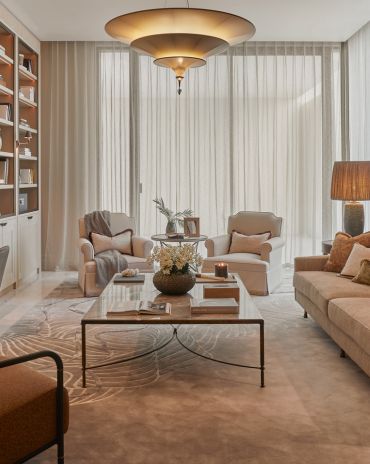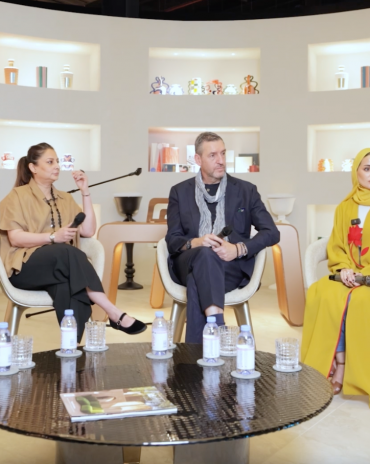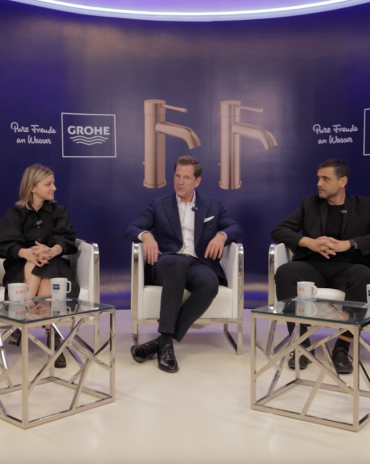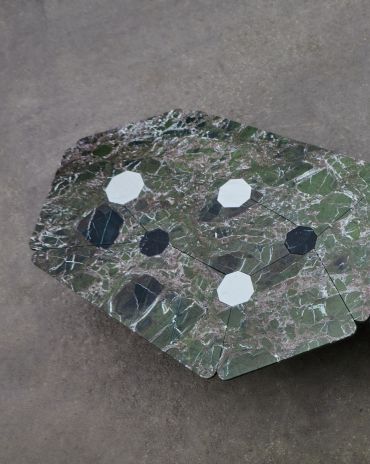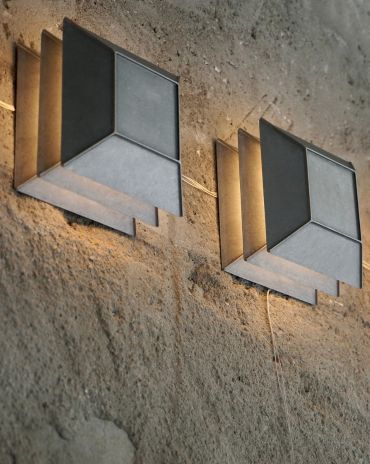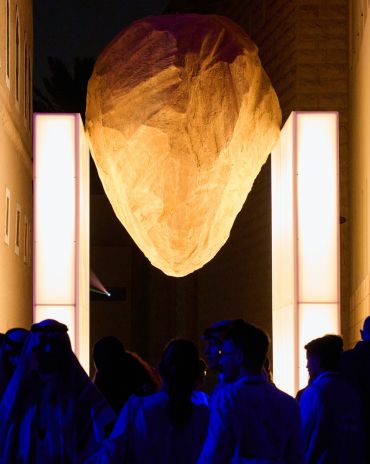Copyright © 2025 Motivate Media Group. All rights reserved.
Shaping Urban Transformation
Gensler’s Design Forecast Report 2025 identifies the top global design trends that will impact the real estate and built environment this year


Global architecture, design and planning firm Gensler has revealed its latest design forecast report, which focuses on crafting adaptable, sustainable spaces that elevate the human experience while meeting the demands of modern life.
Tim Martin and Tariq Shaikh, Co-Regional Managing Directors and Principals at Gensler Middle East, said: “This year’s Design Forecast demonstrates how bold, visionary design can address global challenges and make a tangible impact. We are at a transformative moment in our industry, one that demands groundbreaking ideas and innovative solutions to enhance the human experience. Looking ahead, we are optimistic about design’s potential to shape a sustainable future that inspires and positively impacts people in meaningful ways.”
Here are five key takeaways from the report:
1. Experience-Driven Lifestyle Districts Reignite Global Cities
Mixed-use lifestyle and entertainment districts will take centre stage in 2025 as the new anchors for cities looking to drive community engagement and bring people together around shared experiences. Hospitality, retail, sports and residential spaces make up the mix of these experience-driven areas, the rise of which is also driving demand for safe streets and reliable transit options. The Diplomatic Quarter project in Riyadh showcases a recent Gensler example. Spanning a 38,000-square metre site, this development integrates retail, food and beverage, as well as entertainment spaces tailored to young professionals and families, creating a vibrant hub for urban living.
2. Demand for Sustainable Design Supercharges Innovation and Value
With organisations everywhere increasingly aware of climate risk, buildings designed with resilient and sustainable strategies are trading at premium values. This sustainable surge is also driving demand for game-changing innovations in construction processes and the materials industry. The adaptive reuse of old buildings, energy-efficient designs, weather-scenario planning and other green techniques are anticipating local climate challenges while reducing waste and carbon emissions. Solutions such as low- or no-carbon interior finishes and furnishings and zero-carbon cement are leading the materials revolution.
3. Deeply Discounted Buildings Drive a Conversion Boom
On a global scale, with ageing office buildings and other devalued assets trading at deeply discounted rates, the adaptive reuse boom is poised to create valuable new real estate beyond just office-to-residential conversion. As the cost of capital comes down, Gensler predicts that 2025 will usher in a new financial environment that will inspire developers to seek out creative conversions of all types. Specific to the Middle East region, they expect to see conversion from hospitality to healthcare, sports to retail, office to residential and more. The Al Faisaliah redevelopment project in Riyadh, for example, reimagines traditional retail and office spaces into a dynamic mixed-use environment.

4. The Workplace of the Future has Arrived
The future workplace is reportedly all about employee experience, inspiration and the value proposition being realised by building owners and developers. In 2025, tenants will continue to search for workplace experiences that motivate employees and meet their professional aspirations. Landlords looking to compete must be laser focused on transforming their spaces into fully amenitised, Class A buildings close to transit and within the 20-minute lifestyle mix. In Abu Dhabi, Gensler’s design for a leading cybersecurity firm applies urban design principles to create a multifunctional workspace. Key zones such as The Harbour, The Neighborhood and The Oasis offer tailored spaces for interaction, focused work and relaxation, creating a balanced and productive environment.
5. Luxury Housing Meets Growing Demand
Attainable market-rate housing becomes the number one priority for cities around the world in 2025 as new financial incentives and lowering interest rates converge with changes to zoning laws and building codes to create an attractive market for housing developments of all types.
In the Middle East, the UAE and KSA are responding to different shifts in ways that reflect their unique market priorities. In the UAE, the focus is on meeting the growing demand for luxury residential properties, fuelled by an influx of high-net-worth individuals, financial incentives and a thriving expatriate community. Developers are increasingly integrating advanced technologies and sustainable designs to cater to residents seeking bespoke living experiences. Dubai’s luxury developments demonstrate a trend toward world-class amenities, privacy and convenience, reinforcing the city’s reputation as a luxury destination.
Meanwhile, in KSA, the housing market reflects the broader Vision 2030 goals, emphasising the creation of vibrant, sustainable and inclusive communities. Mixed-income developments are gaining traction, with affordable housing projects balancing rapid urban expansion in cities like Riyadh and Jeddah. These initiatives aim to address the needs of a growing middle class while supporting government ambitions to improve home ownership rates. The integration of smart city concepts, cultural heritage preservation and green infrastructure is redefining housing in the Kingdom, aligning with its aspirations for a more liveable and sustainable urban future.
As cities worldwide face evolving challenges, Gensler’s Design Forecast 2025 offers a blueprint for building adaptable, sustainable environments that put people at the centre.
Read more features here.
The Latest
Dubai Design Week: A Retrospective
The identity team were actively involved in Dubai Design Week and Downtown Design, capturing collaborations and taking part in key dialogues with the industry. Here’s an overview.
Highlights of Cairo Design Week 2025
Art, architecture, and culture shaped up this year's Cairo Design Week.
A Modern Haven
Sophie Paterson Interiors brings a refined, contemporary sensibility to a family home in Oman, blending soft luxury with subtle nods to local heritage
Past Reveals Future
Maison&Objet Paris returns from 15 to 19 January 2026 under the banner of excellence and savoir-faire
Sensory Design
Designed by Wangan Studio, this avant-garde space, dedicated to care, feels like a contemporary art gallery
Winner’s Panel with IF Hub
identity gathered for a conversation on 'The Art of Design - Curation and Storytelling'.
Building Spaces That Endure
identity hosted a panel in collaboration with GROHE.
Asterite by Roula Salamoun
Capturing a moment of natural order, Asterite gathers elemental fragments into a grounded formation.
Maison Aimée Opens Its New Flagship Showroom
The Dubai-based design house opens its new showroom at the Kia building in Al Quoz.
Crafting Heritage: David and Nicolas on Abu Dhabi’s Equestrian Spaces
Inside the philosophy, collaboration, and vision behind the Equestrian Library and Saddle Workshop.
Contemporary Sensibilities, Historical Context
Mario Tsai takes us behind the making of his iconic piece – the Pagoda
Nebras Aljoaib Unveils a Passage Between Light and Stone
Between raw stone and responsive light, Riyadh steps into a space shaped by memory and momentum.

